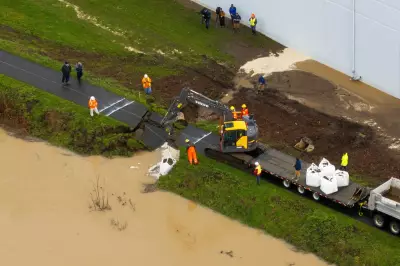
A dramatic and unseasonal Arctic invasion is poised to grip the United States, with weather experts warning of a potentially record-breaking cold snap that could see temperatures plummet to unprecedented lows for this time of year.
The Icy Onslaught Begins
Forecast models indicate a powerful surge of polar air will descend from the Arctic regions, sweeping across the nation with breathtaking speed. This meteorological phenomenon, often associated with the deepest winter months, is making its appearance alarmingly early in the season.
Meteorologists are particularly concerned about the intensity of this cold front, which could see mercury levels dropping 10-20 degrees Fahrenheit below seasonal averages across multiple states. The frigid conditions are expected to persist for several days, creating a prolonged period of winter-like weather that typically doesn't arrive until December or January.
Regions in the Crosshairs
The Arctic blast is predicted to impact a vast swathe of the country, with northern states facing the most severe conditions. Areas from the Rocky Mountains through the Midwest and into the Northeast should prepare for the sharp temperature drop.
Key impacts include:
- Dangerously low wind chills creating hazardous outdoor conditions
- Potential for early-season snowfall in regions unaccustomed to winter precipitation
- Increased risk of frostbite and hypothermia for those unprepared
- Potential stress on energy grids as heating demand spikes unexpectedly
Why This Early Cold Snap Matters
This premature winter weather event serves as a stark reminder of nature's unpredictability. While climate change discussions often focus on warming trends, such extreme cold events demonstrate the complex interplay of atmospheric patterns that can produce surprising weather phenomena.
Residents in affected areas are urged to take necessary precautions, including winterising homes and vehicles, checking heating systems, and preparing emergency kits. The sudden onset of such cold conditions can catch many off guard, particularly so early in the autumn season.
Weather authorities continue to monitor the situation closely, with updates expected as the Arctic air mass approaches and its full impact becomes clearer.





